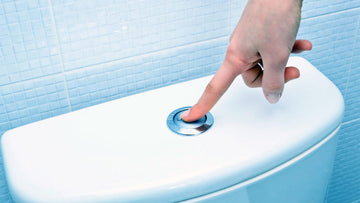The question, how does a toilet flush? may seem rather mundane, yet the technology behind it is both fascinating and crucial. If you're in the plumbing industry or simply a curious homeowner, understanding the mechanics of how toilets operate can lead to improved maintenance practices and can even help in troubleshooting common issues.
This article delves into the remarkable world of toilet flushing technology. We will discuss the various components involved, how they work together, and some tips for keeping your toilet functioning optimally.

The Anatomy of a Toilet Flush
To fully grasp how does a toilet flush, one must first understand the different parts of a toilet. Here, we will dissect the anatomy of a toilet, focusing on how each component plays a vital role in the flushing process.
1. The Tank
The tank is the backbone of the flushing system. It stores the water that initiates the flushing. When you press the flush handle, a *flapper* valve opens, allowing water to rush from the tank into the toilet bowl.
2. The Bowl
The bowl is where all the action happens. As water enters the bowl, it creates a siphonic action that draws waste down into the plumbing system. Without this action, we would simply have a bowl of stagnant water!
3. The Siphon
This is the critical component that helps the waste exit the toilet. The design of the siphon helps create a vacuum effect that pulls the waste downwards once enough water enters the bowl. Understanding this can greatly improve your troubleshooting skills.
How the Flush Works
The actual process of how does a toilet flush can be simplified into several key stages:
1. Water Release
Once the flush handle is pressed, the flapper valve in the tank raises, releasing a significant amount of water into the bowl. This surge drives the waste out through the trapway.
2. Creation of Siphon
The rapid influx of water creates a siphon. The geometry of the toilet bowl plays a crucial role here; the shape must effectively facilitate the water and waste flow.
3. Bowl Refill
After the flush, the tank refills, preparing for the next flush. During this time, the flapper closes to halt the water release. This is crucial for being water-efficient.
Common Issues with Toilet Flushing
For those in industry QA, understanding common problems can be life-changing. A few common issues revolve around:
1. Clogs
Clogs are the bane of many toilets. A clog can form due to excessive toilet paper or non-flushable items being disposed of in the toilet. Understanding how to handle clogs can save you time and cost.
For tips on how to tackle clogs effectively, check out this clog prevention guide.
2. Weak Flush
A weak flush can often be attributed to a variety of issues, including low water levels in the tank or a malfunctioning flapper valve. Fixing these can lead to a more powerful flush with better waste removal.
For more insights on improving your toilet flush, take a look at this toilet flush guide.
3. Noisy Toilets
Many toilets can produce annoying sounds during a flush due to trapped air or vibrating parts. Troubleshooting these noises can lead to a more peaceful bathroom environment.
Maintenance Tips
Maintaining a toilet is essential for longevity and performance. Here are some terrific tips to keep in mind:
1. Regular Cleaning
Regular cleaning prevents build-up that can hinder performance. Use safe cleaning products to avoid damaging the inner mechanisms.
2. Check the Flapper
Inspect the flapper valve periodically for wear and tear. It plays a crucial role in the flushing process. If it is found to be leaking water, replace it immediately!
3. Water Level Check
Check the water levels in the tank regularly. Low water can lead to weak flushing performance.
:max_bytes(150000):strip_icc()/GettyImages-1136382912-80f8c124193147a999082d2ab70d9c49.jpg)
Frequently Asked Questions (FAQ)
1. Why does my toilet struggle to flush completely?
A common reason is low water levels in the tank or a clog in the pipes. It is essential to check both aspects.
2. How often should I clean my toilet?
It is recommended to clean your toilet at least once a week to ensure hygiene and performance.
3. Can a low-flow toilet be effective?
Yes! Modern low-flow toilets are designed to use less water without sacrificing performance, making them both environmentally friendly and cost-effective.
For more tips on toilet maintenance, visit this health guide.
As an Amazon Associate, I earn from qualifying purchases.






